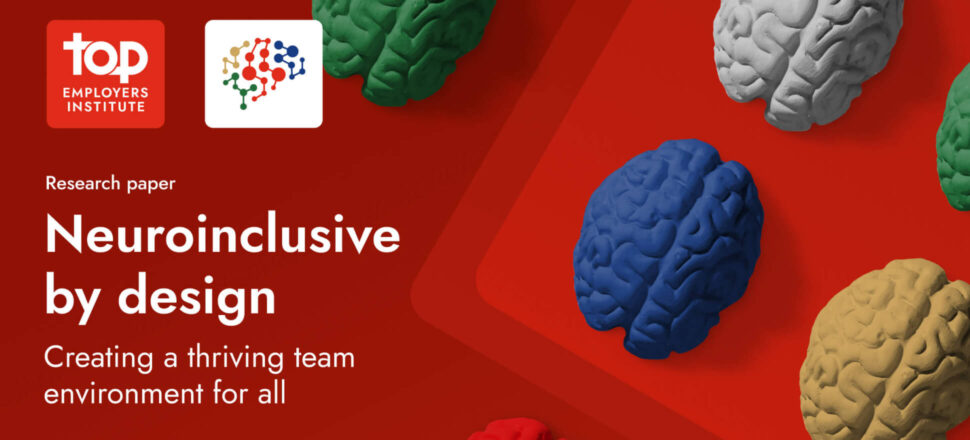With an estimated 10-20% of the population identifying as neurodivergent, many organisations are seeking ways to harness their untapped potential. However, there is a paradox at the heart of the current debate around neurodiversity in the workplace. Research shows that teams with neurodivergent members experience up to a 30% increase in overall success, and individuals with ADHD score 41% higher in creativity tests. Yet many neurodivergent employees still face barriers, with over 50% fearing workplace stigma or discrimination.
Why is this – and what can be done about it for the benefit of businesses and employees alike?
At Top Employers Institute we’ve been delving deep into what makes neurodiverse teams thrive. Our forthcoming research paper, Neuroinclusive by design: Creating a thriving team environment for all, explores the steps organisations can take to build truly inclusive workplaces. It provides key statistics, and practical recommendations that HR can implement to create a more neuroinclusive workplace.
Traditional workplace structures are changing, and neuroinclusive practices are forming the blueprint for the future of work. For a true neuroinclusive workplace, however, HR leaders must shift from providing piecemeal adjustments to embedding systemic inclusivity into their hiring, team collaboration, and leadership development practices. Organisations that embrace neurodiversity in this way will not only enhance employee wellbeing but also gain a vital competitive edge.
Through extensive research and interviews with neurodivergent employees, we have identified three critical traits shared by successful neurodiverse teams:
- Harnessing individual talents for collective success. Neurodivergent employees excel when given flexibility and autonomy, allowing them to leverage their unique strengths in a way that benefits the entire organisation.
- Defining and committing to consistent ways of working. High-performing teams find the right balance between structure and flexibility, co-creating communication methods that work for everyone.
- Embracing empathy and nurturing interpersonal trust. A culture of psychological safety, where employees feel understood and valued, fosters collaboration and engagement.
Being ‘neuroinclusive by design’ is about reshaping the workplace so that diverse ways of thinking, processing information and collaborating are naturally supported. This approach benefits everyone, leading to more innovative, adaptable, and high-performing teams.
Can your business afford to ignore the benefits of creating a thriving team environment for all? By championing neurodiversity within teams, companies are not just creating better workplaces—they are shaping the future of work itself.
Don’t forget to sign up to our waiting list for our forthcoming research paper ‘Neuroinclusive by design: Creating a thriving team environment for all.
